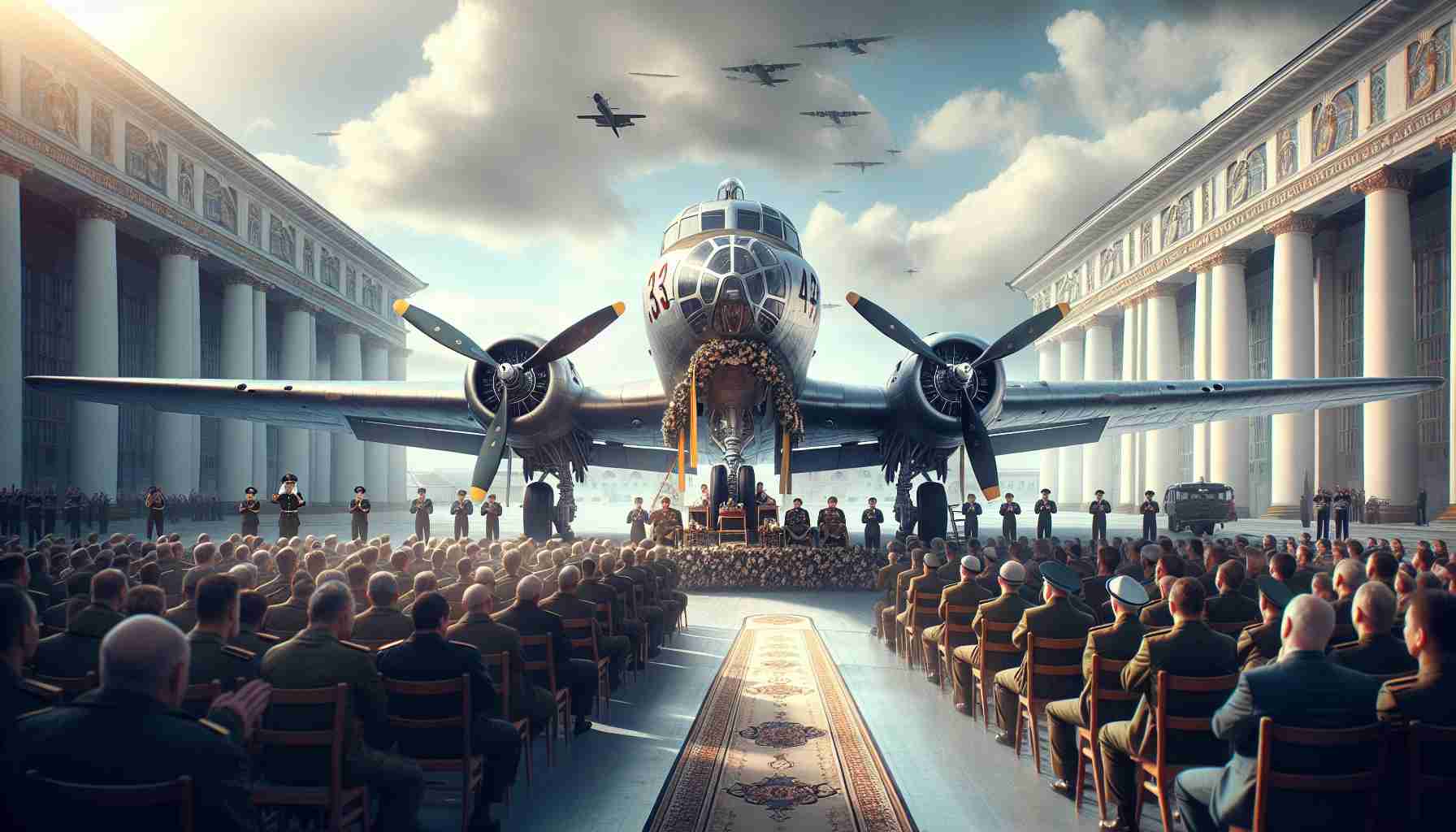Discovering the Yakovlev Yak-9
The Yakovlev Yak-9 stands out as one of the most remarkable fighters of World War II. This Soviet marvel is celebrated for its lightweight design and exceptional power-to-weight ratio, which contributed to its formidable performance in dogfights. Capable of executing a full 360-degree turn in just 18.5 seconds, the Yak-9 quickly earned a reputation in the skies.
Since its introduction to Soviet fighter squadrons in late 1942, the Yak-9 played a crucial role in establishing air supremacy against formidable adversaries like the Focke-Wulf Fw 190 and Messerschmitt Bf 109G. By the end of its production run in 1948, over 16,500 units had been manufactured, solidifying its status as a prominent yet often overlooked airplane of the conflict era.
One intriguing Yak-9, known as “Ol Snort,” was recently acquired by enthusiast Dan Kirkland. This aircraft has a unique backstory; it is among the few models built by Strela and has changed hands multiple times. After undergoing significant modifications for safety and maintenance efficiency, it has become a vital addition for the Southern Heritage Air Foundation.
As the civil aviation community continues to see fewer Yak-9s, the legacy of this exceptional aircraft lives on, showcasing resilience and extraordinary engineering from a pivotal time in history.
Long Reaches of History: The Yak-9’s Impact
The legacy of the Yakovlev Yak-9 transcends its immediate military achievements during World War II, influencing both contemporary aviation technology and cultural narratives surrounding war and heroism. As nations reflect on past conflicts, the stories and machines like the Yak-9 become focal points for understanding resilience and innovation in warfare. This fighter not only shaped Soviet air tactics but also contributed to the evolution of aircraft design globally, paving the way for future generations of military and commercial aviation.
In terms of societal impact, the Yak-9 has become a symbol of Russian patriotism, embodying the nation’s WWII experience. Its presence in airshows and museums serves to remind modern audiences of historical sacrifices and triumphs. The aircraft’s reputation has also leveraged a burgeoning interest in immersive historical experiences, increasingly blending education with entertainment in culturally rich narratives.
Additionally, as aviation enthusiasts and restorers like Dan Kirkland invest resources into preserving these historical aircraft, there lies a potential environmental concern. The restoration and operation of vintage planes often involve materials and technologies with a heavier carbon footprint than modern aviation. As society balances historical preservation with sustainability, the challenge will be to find eco-friendlier methods of maintaining these flying relics.
Looking ahead, the trajectory of historical fighters like the Yak-9 suggests a future where the aviation community might increasingly converge on restoration methods that honor the past while addressing environmental responsibilities. As collectors and historians push for greater awareness of aircraft heritage, the Yak-9 stands as a testament to human creativity and a call to responsibly navigate the complexities of preserving our aviation history.
Unveiling the Legacy of the Yakovlev Yak-9: A WWII Icon
Discovering the Yakovlev Yak-9
The Yakovlev Yak-9 remains a beacon of innovation and performance among World War II fighter aircraft. This Soviet fighter is celebrated not only for its lightweight design but also for its exceptional maneuverability, exemplified by a remarkable power-to-weight ratio that made it a standout in aerial dogfights. The Yak-9’s ability to complete a full 360-degree turn in just 18.5 seconds has contributed significantly to its legendary status in military aviation.
Features and Specifications
1. Design and Performance:
– Wingspan: Approximately 9.2 meters (30 ft 2 in).
– Top Speed: Reaches up to 650 km/h (404 mph) at altitude.
– Armament: Typically equipped with a combination of 20mm and 12.7mm cannons, enhancing its firepower against enemy aircraft.
2. Production and Variants:
– The Yak-9 was produced in numerous variants, including the Yak-9D (long range) and Yak-9K (heavy armament), catering to diverse mission requirements.
– Over 16,500 units were built by 1948, with variants adapted for roles including ground attack and reconnaissance.
Pros and Cons
– Pros:
– Excellent maneuverability suited for dogfighting.
– Robust construction that ensured survivability in combat.
– Versatile design allowed for a range of combat roles.
– Cons:
– Early models had limited range compared to contemporaries.
– Performance could be affected at high altitudes, leading to some limitations against altitude-optimized fighters.
Use Cases
The Yak-9 served across various fronts during World War II, including:
– Air Superiority Missions: Engaging enemy fighters like the Focke-Wulf Fw 190 and Messerschmitt Bf 109G.
– Ground Attack Roles: Supporting ground troops by targeting enemy positions.
– Escort Missions: Protecting bombers on strategic bombing runs.
Market Trends and Predictions
As the civil aviation market evolves, vintage aircraft like the Yak-9 continue to attract the attention of collectors and aviation enthusiasts. With fewer original models available today, prices have soared for well-preserved aircraft, making it a lucrative investment for collectors. Predictions point towards a growing interest in historical aircraft exhibitions and airshows, further solidifying the Yak-9’s place in airshow lineups.
Innovations and Security Aspects
The Yak-9 incorporated various technological innovations for its time, including:
– All-metal construction which was less prone to damage compared to wood and fabric designs.
– Advanced control surfaces that provided superior stability and responsiveness in flight.
Insights into Preservation
The preservation of Yak-9 aircraft like “Ol Snort,” recently acquired by enthusiast Dan Kirkland, highlights the importance of maintaining historical aircraft for future generations. The Southern Heritage Air Foundation’s efforts in modifying and restoring the aircraft for safety and maintenance illustrate a commitment to honoring aviation history and educating the public.
Conclusion
The legacy of the Yakovlev Yak-9 endures through the dedication of aviators and historians who celebrate its contributions to aviation. As fewer planes survive, the significance of each remaining Yak-9 is amplified, not only as a piece of military history but also as a testament to innovative engineering under the pressures of war.
For more on aviation history and airplanes like the Yak-9, be sure to explore NASA and their contributions to aerospace advancements.







